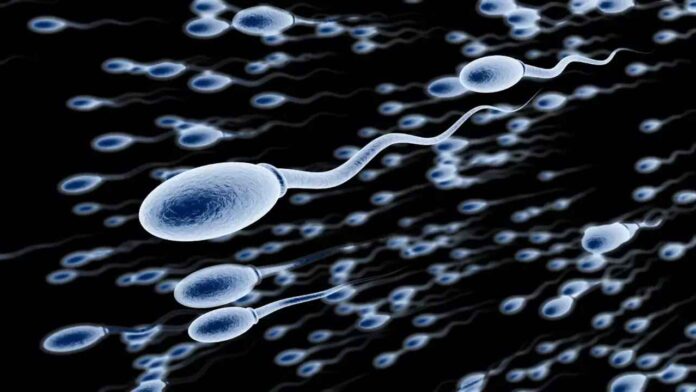Sperm cells, the microscopic heroes of procreation, possess a remarkable ability to traverse through viscous fluids with seemingly little effort. This phenomenon challenges Newton’s third law of motion, which states that every action has an equal and opposite reaction.
In this article, we will explore the fascinating science behind how sperm cells, along with other microscopic biological swimmers like algae, defy this fundamental law of physics. Through a deep dive into recent research conducted by Kenta Ishimoto, Clément Moreau, and Kento Yasuda at Kyoto University, we will uncover the secrets behind the unconventional movement of sperm cells and shed light on the concept of non-reciprocal interactions in the microscopic world.
The Enigma of Non-Reciprocal Interactions
Newton’s third law of motion, a cornerstone of classical physics, describes the symmetrical relationship between forces in nature. However, in chaotic and unruly systems like flocking birds, particles in fluid, and swimming sperm, non-reciprocal interactions emerge, allowing equal and opposite forces to be bypassed.
In these systems, such agents exhibit asymmetric interactions with their surroundings, enabling them to move through sticky fluids without invoking an equal and opposite reaction. This unique behavior is made possible by the additional energy generated by these organisms themselves, which propels them far from equilibrium and alters the rules of classical physics.
Unraveling the Secrets of Sperm Cells and Algae
To investigate the mechanics behind the peculiar movement of sperm cells and algae, Ishimoto and his colleagues conducted a series of experiments and mathematical modeling studies. By analyzing the motion of human sperm cells and green algae, specifically Chlamydomonas, they sought to understand how these microorganisms navigate through highly viscous fluids that would typically impede their progress.
The Role of Flagella in Cellular Mobility
Both sperm cells and algae rely on whip-like appendages called flagella to propel themselves forward. These thin, flexible structures exhibit wave-like motions, which create a pushing and pulling effect, enabling the cells to navigate through their liquid environments.
The researchers observed that these fluid movements should theoretically generate equal and opposite reactions from the surrounding medium, hindering the cells’ progress. However, this was not the case.
Odd Elasticity: A Key to Efficient Movement
During their investigations, Ishimoto and his team made a significant discovery. They found that sperm tails and algal flagella possess an intriguing property known as “odd elasticity.”
This unique characteristic allows these flexible appendages to whip about without dissipating much energy into the surrounding fluid. The flagella’s ability to bend in response to the liquid’s resistance enables them to conserve the energy of their owner, defying Newton’s third law of motion.
The Odd-Bending Modulus: Deciphering Inner Interactions
To further unravel the mechanics of flagella and their role in non-reciprocal interactions, the researchers introduced the concept of an “odd elastic modulus.”
Through solvable models and the analysis of biological flagellar waveforms, such as those exhibited by Chlamydomonas and sperm cells, they aimed to decipher the nonlocal, nonreciprocal inner interactions within these materials. This understanding could pave the way for the design of small, self-assembling robots that mimic the efficient movement of living organisms.
Implications and Future Applications
The findings of this study hold significant implications beyond the realm of reproductive biology. By shedding light on the principles governing non-reciprocal interactions, researchers may gain valuable insights into collective behavior and self-assembly processes.
The modeling methods employed in this study can be applied to various fields, such as robotics and materials science, enabling the development of innovative technologies that harness the efficiency and adaptability of natural systems.
Conclusion
In the fascinating world of microscopic organisms, the laws of classical physics are often bent, if not entirely defied. Sperm cells and algae, with their non-reciprocal interactions and odd elasticity, challenge our understanding of Newton’s third law of motion.
The research conducted by Ishimoto, Moreau, and Yasuda sheds light on the mechanisms behind this unconventional movement, opening doors to new possibilities in the fields of biology, robotics, and materials science.
As we continue to explore the secrets of the microscopic world, we uncover nature’s clever adaptations that defy our expectations and inspire innovative solutions to complex challenges.
Reference:
Kenta Ishimoto et al, Odd Elastohydrodynamics: Non-Reciprocal Living Material in a Viscous Fluid, PRX Life (2023). DOI: 10.1103/PRXLife.1.023002

This so interesting. And to think, not only does sperm have the key to procreation and ultimately the survival of our species, but the implications reach farther and in fact “could” offer benefits in robotics. Between discoveries like this and quantum physics, natural science that involves the study of matter and its motion through space and time is being rewritten.
Yup, once AI gets ahold of this info, R2D2 is gonna be the Silicon Lothario…
All research should be investigated by independent scientists who attempt to verify the conclusions. Before we get too excited, we need to hear the opinions of other scientists who are trying to confirm or refute the results.
I’m betting on Physics and Newton. Haven’t let me down yet.
Many will find this hard to swallow
No violation of the Newton’s third law here. A human swimmer pushes the water backward to propel herself/himself forward in the opool. This is exactly what a sperm does.
I agree. I was also thinking of how some snakes move through sand or how eels move brought water. I don’t see how Newton’s third law is being violated there either.
So does a submarine or ship through water , I think you missed the point